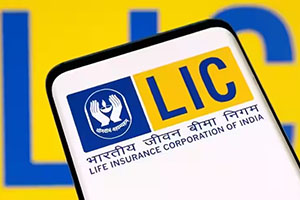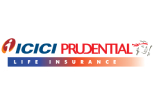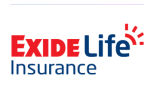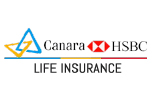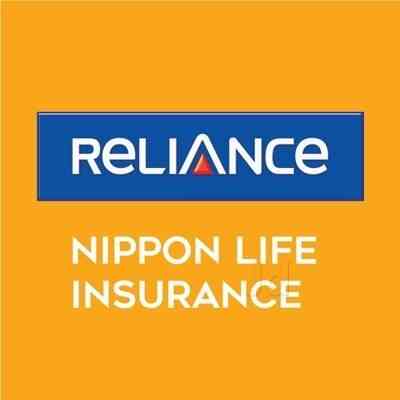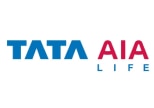What Is Solvency Ratio in Life Insurance & How It Is Calculated?
Life insurance has become an integral part of the financial security of your loved ones in case of unforeseen circumstances. Statista shows that the life insurance market is expected to reach INR 10 Lakh crore by 2025. With this number, it becomes necessary to consider some key factors when choosing an insurance provider to ensure long-term financial stability. One such factor is Solvency Ratio.
Solvency Ratio is a major component of insurance services that guarantees that the company can meet its obligations timely. But what is Solvency Ratio, exactly? And how does it influence life insurance policies? If you also have these questions, then read on to find the relevant answers that will help you to select a reliable insurance provider.

What Is Solvency Ratio?
Solvency Ratio (SR) is the measure of an insurance company's capacity to meet its liability (claims) and other financial commitments with its assets. It determines the company’s actual cash flow by including depreciation and other non-cash expenses, offering more accurate insights into its financial stability than net income. This helps to understand the company’s long-term health by measuring cash flow capacity relative to all liabilities, instead of just short-term debt.
Solvency Ratio assesses the long-term financial stability of the company by calculating its long-term debt repayment ability and associated interest. Solvency Ratio varies from industry to industry. Therefore, the company’s Solvency Ratio should be compared with its competitors within the same industry instead of viewed in isolation. Insurers with a high Solvency Ratio ensure that they’ve sufficient assets to cover future claims and other obligations than a low Solvency ratio.
Solvency ratios are also used in insurance assessments to compare the size of an insurer's capital to written premiums. This helps quantify the risk an insurer faces on uncovered claims.
Importance of Solvency Ratio in Life Insurance
Solvency Ratio is an essential factor that you can’t miss when choosing an insurance policy. Below are some notable reasons why you should choose companies with higher solvency ratios for life insurance:
1. Financial Stability
Solvency Ratio provides an accurate picture of an insurer’s overall financial health. It considers the company’s ability to cover its long-term liabilities, cash flows, and outflows. Assessing this ratio can help you understand if an insurer can manage their financial responsibilities effectively. A high Solvency Ratio of a company indicates its long-term financial security, stability, and credibility. They may have fewer chances to face insolvency than low SR insurers.
For instance, if a company has a low Solvency Ratio of less than 1, it may delay paying the assured claim in unforeseen events or not make any payment to you and your family at all. On the other hand, companies with high Solvency Ratios is more than 1.5 are more financially stable and capable of paying you and your family the claim payments.
2. Risk Management
Insurance companies also contribute to effective risk management. This will help insurers comply with regulations and protect themselves from future penalties and legal issues. This financial metric offers valuable insights into an insurance company’s risk management practices. For instance, an insurer with a low Solvency Ratio indicates the company’s poor financial health. That means the company is taking too much risk and might have insufficient assets to meet large or unexpected claims.
3. Investment Decisions
Checking a company's financial stability is one crucial factor that you should consider while investing your money. With a Solvency Ratio, investors and analysts evaluate the company’s investment risks and potential for returns. This will help them make an informed decision and invest their hard-earned money in a reliable insurance company. A high Solvency Ratio can influence users' investment decisions and overall market perception.
How Is Solvency Ratio Calculated?
Solvency Ratio calculation of an insurance company is done by assessing its assets against its liabilities. Here’s a formula to calculate the SR:
Solvency Ratio = (Net Income + Depreciation) ÷ Liabilities
This ratio shows the financial status of the insurer so that it can settle policyholders’ claims timely. It highlights whether the company’s assets or liabilities are sufficient to prevent it from insolvency. Therefore, it’s best to check Solvency Ratio before buying insurance policies to ensure long-term security. Choosing a high SR minimizes the risks of claim rejection or delay in payment settlement.
Solvency Ratio is evaluated based on the solvency margin (available solvency margin to required solvency margin), representing the excess of an insurer’s assets over its liabilities. However, this is not as easy as it initially seems. The IRDA (Insurance Regulatory and Development Authority) instructs specific methods for the valuation of assets and liabilities. Based on these instructions, life insurers need to prepare a statement of solvency and submit it to IRDA quarterly.
Types of Solvency Ratios
Four common types of Solvency Ratios are used to check an insurance company’s ability to cover up its claims. These include:
1. Debt-to-Assets Ratio
Debt-to-assets ratio is used as a primary Solvency Ratio. This ratio computes the insurer's debt to its total assets/earnings. It is usually calculated by dividing liabilities (debts) by assets. Here’s the formula for the debt-to-assets ratio:
Debt-to-Assets-Ratio = Total Debt or Liabilities ÷ Total Assets
This ratio evaluates the company’s total debt to its assets. It highlights the insurer’s ability to pay off its debt with its assets (available). Here are some points to consider for debt-to-assets ratio:
- Ratio <1 indicates that the insurer has more assets than debt
- Ratio >1 indicates that the insurer is insolvent and may face challenges to meet its obligations.
Therefore, look for an insurer with a lower debt-to-assets ratio to ensure more financial stability.
2. Debt-to-Equity Ratio
The debt-to-equity ratio is computed by dividing the company’s total debt by the total equity. It helps to evaluate the debt and equity ratio within the capital structure of the company. Here’s the formula for the debt-to-equity ratio:
Debt-to-Equity Ratio = Total Debt ÷ Shareholder’s Equity
This D/E ratio helps assess the company’s overall financial health. A good D/E ratio is usually considered below 2, indicating that the company is less likely to default. On the other hand, a D/E ratio higher than 2 indicates that the company is facing risks and is more likely to go bankrupt. However, this ratio entirely depends on the company’s growth and industry.
3. Interest Coverage Ratio
The interest coverage ratio indicates the insurer’s ability to pay off its long-term debt obligations. It is computed by dividing earnings before interest and taxes (EBIT) by the total interest expenses on the insurance company’s debts. Here’s the formula for the interest coverage ratio:
Interest Coverage Ratio (Times-Interest-Earned) = EBIT ÷ Interest Expenses
In other words, the interest coverage ratio represents how many times an insurer’s current income can be used to pay off its obligations (current interest payables). If a company has a lower interest coverage ratio (<1.5) that means it is burdened by debt expenses and has limited capital to meet obligations (maximum one and one-half times).
Besides that, using EBITDA (Earning Before Interest, Taxes, Depreciation, and Amortization) results in a higher interest coverage ratio than calculating through EBIT. This EBITDA variation excludes depreciation and amortization. Using EBIAT (Earnings Before Interest After Taxes) provides more valuable insights into an insurer’s ability to pay off its interest expenses. This variation excludes taxes from the numerator to render.
4. Equity Ratio
Equity ratio, or equity-to-assets, indicates how much of an insurance company’s assets have been generated by equity shares as opposed to raising debt. This ratio is calculated by dividing the total equity/share (issue) of insurers’ by the total assets. Here’s the formula for the equity ratio:
Equity Ratio: Total Equity ÷ Total Assets
The following are some points to consider for the equity ratio:
- If an insurer has an equity ratio of 0.50 or less; considered leveraged.
- If an insurer has an equity ratio of 0.50 or more; considered conservative.
Therefore, a higher equity ratio indicates the stable financial status of the company; less dependent on creditors.
Regulatory Requirements (IRDAI Guidelines)
In India, the Insurance Regulatory and Development Authority of India (IRDAI) has prescribed solvency ratios for insurance companies. IRDA mandates a minimum Solvency Ratio of 1.5 for all insurance companies to lower risks. This ratio also symbolizes the Required Solvency margin (RSM).
A solvency margin should be 150% to safeguard the interests of Indian policyholders. It is a company’s extra capital that it needs to hold to cover losses. It is like a financial backup for unexpected claims, helping companies minimize the risk of insolvency.
Examples to Understand Solvency Ratios
Below are examples to understand a Solvency Ratio:
1. Interest Coverage Ratio
Imagine, an insurance company has earnings before interest and taxes (EBIT) of Rs 15 crore and interest expenses (payables) of Rs 90 lakh. Then, its interest coverage ratio should be:
Interest Coverage Ratio: 15,00,00,000/90,00,000 = 16.66
This interest coverage ratio of 16.66 indicates that the insurer is earning 16.66 times more than its interest payables. It means the company can easily meet the interest payments.
2. Debt-to-Equity Ratio
Consider, a company that has a long-term liability of Rs 100 crore and shareholder’s equity amounting to Rs 60 crore. Then, the debt-to-equity ratio should be:
Debt-to-Equity ratio = 100,00,00,000/60,00,00,000 = 1.66
This D/E ratio of 1.66 times indicates that for every rupee of equity, the insurance company has Rs 1.66 in debt.
How to Check an Insurance Company’s Solvency Ratio
If you want to check a Solvency Ratio of insurance companies in India, visit either the official IRDAI website or the Insurance company website. You can access the IRDAI annual report directly from the website under the section for “regulatory filings or public disclosures.” However, insurance companies provide financial information, including SR, under sections like investor relations, financials, or regulatory disclosures,” on their websites.
It is wise to compare Solvency Ratios of different insurers to gain better insights. This will help you make an informed decision about purchasing a life insurance policy and other insurance products.
Does Solvency Ratio Matter When Choosing an Insurance Plan?
Yes. Look, your life insurance policy is a legal contract where you pay the premium. In return, the insurance company will offer a sum assured to your nominee in case of untimely demise. But, if the company becomes insolvent, it might be unable to pay the assured amount to the nominee. Due to this insurer’s insolvency, your family may experience a financial shortfall in times of need. In that case, if you want to secure your family’s financial future, choose a higher SR insurance company.
The Bottom Line
When buying a life insurance policy, considering a Solvency Ratio is one of the important steps. This will not only help you find the right insurance partner but also ensure that you will get the claims seamlessly when needed. So, it’s become imperative to assess this financial ratio while choosing an insurance policy to safeguard you and your family. You must consider this factor along with others like paying premiums timely, selecting add-on benefits, and more before buying a life insurance policy.
Moreover, when evaluating an SR, ensure it is not too close to the IRDA recommended value of 1.5. If so, the insurance company has a higher chance of insolvency in the future. Choose an insurer with a good Solvency Ratio, like InsuranceDekho, which provides comprehensive insurance solutions to protect your loved ones regardless of your budget. So, what are you waiting for? Visit us today and start investing for a financially secure future for your family.
FAQs on Solvency Ratio
Ques 1. How does a 1.5 Solvency Ratio protect insurance policyholders?
Ans. In India, the IRDA (Insurance Regulatory and Development Authority) mandates that all insurance companies sustain a minimum Solvency Ratio of 1.5. If a company has Solvency Ratio of 1.5 or more, it ensures that it is sufficient to fulfill its financial obligations (claims).
Ques 2. Why is Solvency Ratio of 1 concerning insurance customers?
Ans. Solvency Ratio less than 1 indicates the company doesn’t obey the IRDAI guidelines (to maintain Solvency Ratio minimum of 1.5). This ratio indicates a higher risk of the company’s insolvency in the future, resulting in rejecting or delaying your insurance obligations.
Ques 3. How does solvency impact an insurance company’s reliability?
Ans. For an insurance company, solvency means the ability of the insurer to cover its liabilities and other debt obligations timely. If these companies are unable to generate an adequate amount to pay off their debt obligation, in this case, the company is considering becoming insolvent.
Ques 4. How does a lower Solvency Ratio affect your insurance claims?
Ans. If an insurer has an SR of less than 1.5 (IRDA recommended), It shows a higher risk of the insurer becoming bankrupt. Furthermore, it will lead to rejecting your insurance claim or delaying payments.
Ques 5. Are Solvency Ratio and debt the same?
Ans. No, Solvency Satio is different from debt. Solvency ratios check whether the insurance company has the financial ability to meet its long-term obligations (claims), including debt repayments.















